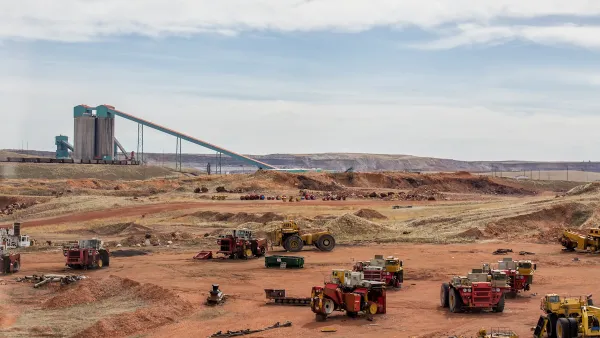A familiar refrain: the EPA proposes new regulation of energy production, and the utility industry responds that new requirements will increase costs. The Center for American Progress recently looked back at how clairvoyant those claims proved to be.
Tina Casey picks up on the findings of a recent report from the Center for American Progress (CAP) that responds to recent outcry by the coal and utility industries over the new, perceived threats in the “war on coal”—namely, “a pair of divisive E.P.A. regulations that are to set new limits on carbon pollution from coal-fired power plants.”
Casey describes the report as “a history of similar warnings about coal regulation”—predictions which failed to account for the positive impact of innovation, including the economic benefits of improved public health. A few examples:
- 1977: "Utilities and related industries predicted an 'economic disaster' from new pollution scrubber regulations. By 1981, the National Commission on Air Quality determined that was wrong, and the bipartisan group had the figures to prove it. The estimated cost of installing new equipment was $16.6 billion in 1978, while the economic benefits of improved air quality ranged from $4.6 billion to $51.2 billion per year."
- 1989: "In response to the acid rain bill, the lobbying group Edison Electric Institute (EEI) issued a detailed report predicting a dramatic rise in electricity rates over a 20-year period. CAP’s own analysis of actual utility rates in 2009 — 20 years later — showed that the prediction was 'flat-out wrong.'"
In response to recent claims by the coal and utility industries that new regulations by the EPA would pass the cost of implementation down to consumers, casey and CAP describe a different reason for potential increases in utility rates: “the main driver of utility rates will not be the power plants or the fuel they use, it will be the urgent need to overhaul the nation’s aging, badly outdated electricity distribution and transmission grid.”
FULL STORY: ‘War on Coal’ is Not the Real Reason Your Utility Rates Will Go Up

National Parks Layoffs Will Cause Communities to Lose Billions
Thousands of essential park workers were laid off this week, just before the busy spring break season.

Retro-silient?: America’s First “Eco-burb,” The Woodlands Turns 50
A master-planned community north of Houston offers lessons on green infrastructure and resilient design, but falls short of its founder’s lofty affordability and walkability goals.

Delivering for America Plan Will Downgrade Mail Service in at Least 49.5 Percent of Zip Codes
Republican and Democrat lawmakers criticize the plan for its disproportionate negative impact on rural communities.

Test News Post 1
This is a summary

Test News Headline 46
Test for the image on the front page.

Balancing Bombs and Butterflies: How the National Guard Protects a Rare Species
The National Guard at Fort Indiantown Gap uses GIS technology and land management strategies to balance military training with conservation efforts, ensuring the survival of the rare eastern regal fritillary butterfly.
Urban Design for Planners 1: Software Tools
This six-course series explores essential urban design concepts using open source software and equips planners with the tools they need to participate fully in the urban design process.
Planning for Universal Design
Learn the tools for implementing Universal Design in planning regulations.
EMC Planning Group, Inc.
Planetizen
Planetizen
Mpact (formerly Rail~Volution)
Great Falls Development Authority, Inc.
HUDs Office of Policy Development and Research
NYU Wagner Graduate School of Public Service




























